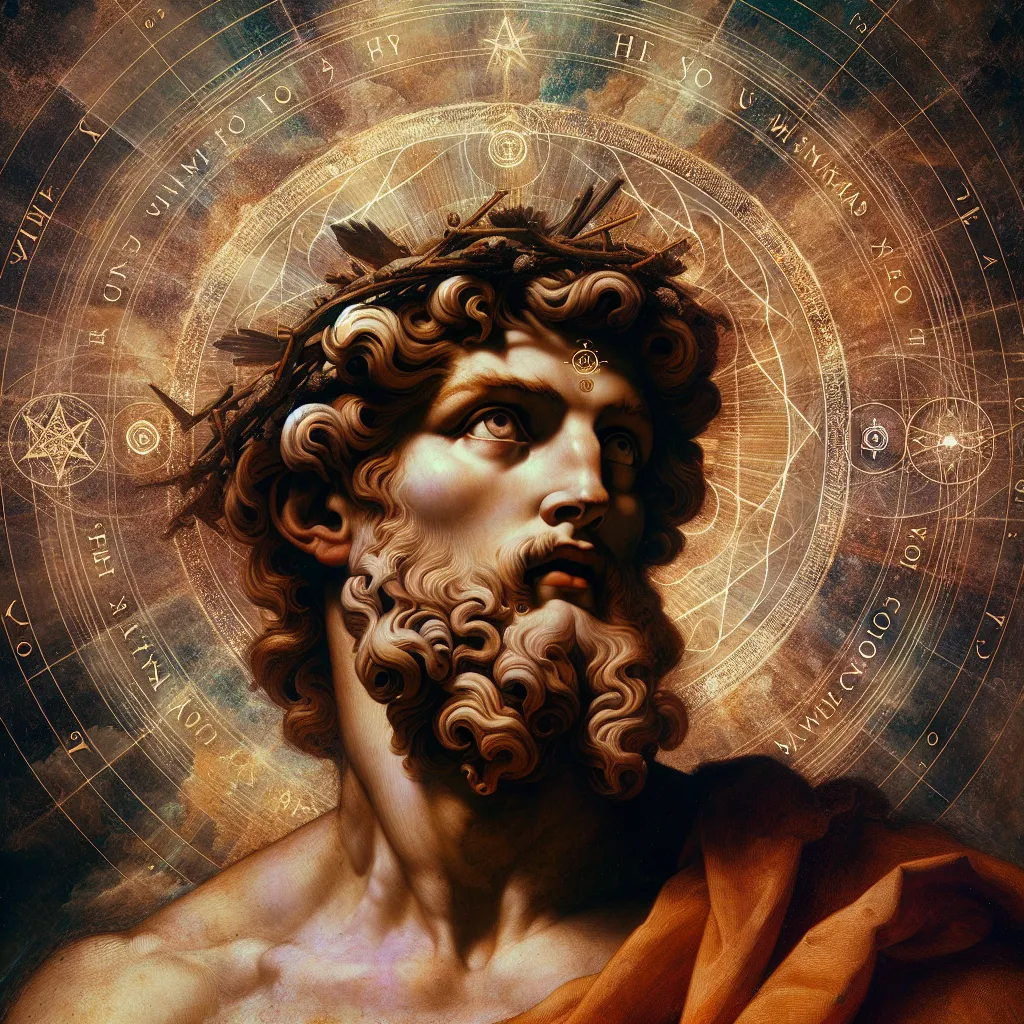
- Published on
- Authors

- Name
- You
The Symbolism in Aleister Crowley’s Artwork: A Fusion of Mysticism and the Metaphysical
Aleister Crowley, a prolific writer and an enigmatic occultist, is perhaps best known for his influential writings and enigmatic persona. However, beyond his literary and magickal works, Crowleys visual art serves as a labyrinthine tapestry woven with intricate symbolic threads. Through paintings, drawings, and symbolic diagrams, Crowley conveyed a profound array of mystical themes and metaphysical principles. In this article, we will delve deep into the symbolism present in his artwork, exploring the esoteric wisdom encoded within.
Themes in Crowley’s Art
Crowley’s artwork can be categorized into several themes that reveal his preoccupation with occult symbolism, spiritual transcendence, and the interplay between the material and spiritual worlds. Below are some of the most prominent themes:
- Hermeticism and Alchemy
- Astrological and Elemental Symbols
- Kabbalistic Influences
- Mythological Figures
Hermetic and Alchemical Symbols
Hermeticism and alchemy are central to understanding Crowleys art. Alchemical symbols often appear in his works, representing transformation and enlightenment. For instance:
| Symbol | Interpretation | Artwork |
|---|---|---|
| Mercury | Represents the mind and transformation | The Alchemist’s Dream |
| Sulphur | The soul and passion | Chymical Wedding |
| Salt | The body and crystallization of matter | The Philosopher’s Stone |
These symbols are not just esoteric devices but signposts pointing toward Crowley’s aspirational journey toward spiritual ascension.
Astrological and Elemental Symbols
Astrology and elemental symbolism act as a foundation in Crowleys visual narrative. He often used:
- The Sun and Moon: Representing conjoined polarity and duality, they often symbolize the synthesis of opposites, as seen in The Duality of Existence.
- The Four Elements: Earth, Air, Fire, and Water appear frequently, signifying different states of being and spiritual processes. For example, the painting Alchemical Quadrants vividly illustrates these elemental forces in dynamic interaction.
Kabbalistic Influences
Crowley was heavily influenced by Kabbalah, the Jewish mystical tradition. The Tree of Life, a central Kabbalistic diagram, often appears in his work:
| Sephirot (Spheres) | Description | Associated Artwork |
|---|---|---|
| Keter | Crown, Divine Will | Crown of Creation |
| Chokhmah | Wisdom | Wisdom’s Light |
| Binah | Understanding | Mother of Form |
The interplay of these spheres in his artwork can be seen as an attempt to map out the spiritual paths and divine attributes of the human soul.
Mythological Figures and Archetypes
Mythological figures are prevalent in Crowley’s art, each carrying deep symbolic meaning:
- Baphomet: A figure embodying the union of opposites, often present in his diagrams, signifies the synthesis of dualities like good and evil, male and female.
- Pan: Often symbolizing primal nature and chaos, Crowley’s depiction of Pan is an ode to unbridled creative and destructive forces.
Conclusion
Aleister Crowley’s artwork is a rich tapestry of symbolism that brilliantly merges advanced metaphysical principles with mysticism. Each stroke and symbol speaks volumes of his profound understanding and his lifelong quest for spiritual enlightenment. By exploring these themes, one gains not just an appreciation of Crowley’s artistic prowess but also a deeper insight into the esoteric wisdom he so passionately sought to unravel.
Crowleys art invites us to transcend the ordinary and glimpse the infinite complexities of the spiritual realm, making it a truly universal language that resonates with mystics, scholars, and art enthusiasts alike.
